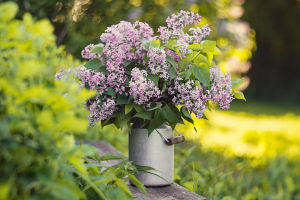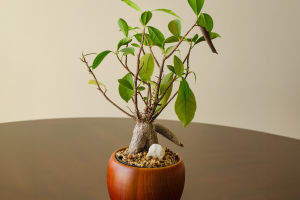
As late spring turns into early summer, our city is filled with the vibrant colors and fragrances of blooming flowers. Among them, lilacs take center stage, transforming parks and gardens into dreamy, purple landscapes.
If you've ever been captivated by their sweet scent or wondered about their history and uses, you're in for a treat. Let's dive into the fascinating world of lilacs!
Lilacs in Full Bloom
Take a walk in any park, and you'll notice lilacs bursting into bloom almost overnight. Just a few days ago, these trees were showing only fresh green leaves. Now, their branches are draped in clusters of delicate purple flowers, filling the air with a soft, refreshing fragrance.
Lilacs grow in tight bunches, creating a visual spectacle that's impossible to miss. The flowers are tiny but numerous, forming large cone-shaped clusters that seem to glow under the sunlight. It's no wonder that lilacs have been cherished for centuries!
A Glimpse into History
Lilacs have been grown and admired in China for over a thousand years. Historical records from the Tang Dynasty (618–907 AD) mention that officials cultivated lilacs in private gardens. The poet Duan Chengshi even wrote about a famous garden in Luoyang where purple lilacs flourished, proving that their charm has stood the test of time.
What Makes Lilacs So Special?
Lilacs, scientifically known as Syringa oblata, are part of the olive family. They are deciduous shrubs or small trees that can grow up to 2–4 meters tall. Originally native to northern China, lilacs have now spread across various regions, including northeast, northwest, and southwest China.
Their leaves are heart-shaped with pointed tips, while the flowers bloom in upright clusters. Each flower has four delicate petals, and occasionally, you might even spot a rare five- or six-petaled blossom! Some say finding one brings good luck—so keep an eye out on your next walk!
Why Do Lilacs Smell So Good?
Ever wondered why lilacs have such a strong, pleasant fragrance? Their scent comes from special compounds called terpenes. These natural chemicals help attract pollinators and play a crucial role in the plant's survival. Scientists have discovered that two specific genes, SoTPS2 and SoTPS3, control the production of these fragrant compounds. Without them, lilacs wouldn't have their signature sweet scent!
The Many Benefits of Lilacs
Lilacs aren't just beautiful; they're also useful in unexpected ways!
• Air Purifiers: Lilacs can absorb pollutants like sulfur dioxide (SO₂), helping to clean the air.
• Natural Remedies: Traditionally, lilacs have been used in herbal medicine for treating digestive issues.
• Essential Oils: Lilac flowers can be distilled to create fragrant oils used in perfumes and skincare.
• Tea Substitute: The young leaves of lilacs can even be brewed into a mild herbal tea!
Can We Eat Lilacs?
You might be familiar with "clove," the spice used in cooking and traditional medicine. But don't confuse it with lilacs! While both share a similar name, they come from entirely different plants.
• Culinary clove (Syzygium aromaticum) is a spice from the myrtle family and has a strong, warm flavor.
• Lilacs (Syringa oblata), on the other hand, are mainly ornamental and not commonly used in cooking.
So, while lilacs smell amazing, it's best to admire them rather than add them to your recipes!
How to Grow Lilacs at Home
Want to bring lilacs into your own garden? They are surprisingly easy to grow!
• Sunlight: Lilacs love bright, sunny spots. The more sunlight they get, the more flowers they produce.
• Soil: Well-draining, nutrient-rich soil is ideal for healthy growth.
• Watering: While lilacs are drought-tolerant, they still need regular watering, especially in dry seasons.
• Pruning: Trim old branches after flowering to encourage fresh growth and better blooms next year.
With just a little care, lilacs can thrive in your garden, rewarding you with their breathtaking beauty and intoxicating scent year after year.
Final Thoughts
Lilacs are more than just pretty flowers; they are a symbol of nature's elegance and resilience. Whether you enjoy their fragrance, appreciate their historical significance, or want to grow them in your own backyard, lilacs have something special to offer.
Lykkers, next time you see a lilac tree, take a moment to breathe in its sweet scent and appreciate the wonders of nature. Have you ever grown lilacs or used them in any way? Share your lilac stories with us—we'd love to hear them! 🌿💜


